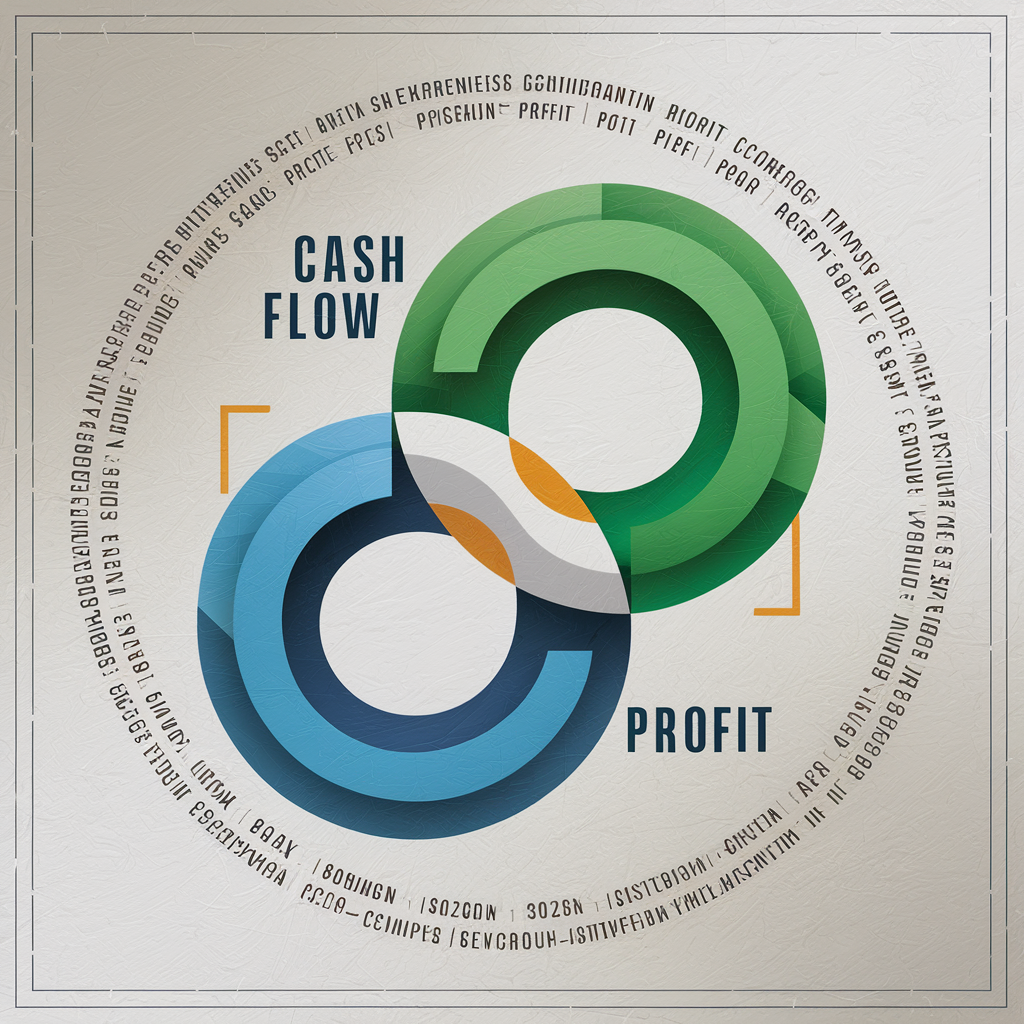Introduction
Two essential financial variables for evaluating the performance and financial health of firms are cash flow and profit. Here's a quick rundown:
The movement of funds into and out of a business over a predetermined time period is referred to as cash flow. It includes all cash inflows from financing, sales, and investments as well as all cash outflows for debt repayment, spending, and investments. A company that has positive cash flow is making more money than it is spending, which is essential for paying debt payments, investing in expansion prospects, and covering daily running costs.
Contrarily, profit is the amount of money that a company makes after subtracting all of its costs from its income. Usually, it is calculated over a given time frame, like a month, quarter, or year. Net profit (revenue less all costs, such as interest payments, taxes, and operating expenditures) and gross profit (revenue less cost of products sold) are two other ways to calculate profit. A company's capacity to produce earnings from its activities and add value for shareholders is largely determined by its profitability.
Although profit and cash flow are both critical performance indicators for businesses, it's important to know how they differ from one another. The actual movement of cash into and out of the company is the subject of cash flow, which sheds light on liquidity and the capacity to pay short-term debt. The income statement's revenue and expenses, on the other hand, are the basis for profit, an accounting metric that may not always accurately represent the actual financial transactions taking place within the company.
Profit and cash flow are both important financial indicators for firms, but they have various uses and offer different perspectives on the state of the business's finances. Businesses may get a complete picture of their financial health and make wise decisions to promote sustainable growth and profitability by comprehending the distinctions between the two indicators and evaluating them together.
Understanding Cash Flow
A basic financial metric called cash flow tracks the actual amount of money coming into and going out of a company over a given time frame. By monitoring the sources and uses of cash, it offers insight into a company's liquidity, operational effectiveness, and financial health.
The power of cash flow to accurately depict a company's current financial situation is crucial since cash is what keeps a corporation running and allows for investment, expansion, and operations. Because cash flow only considers the cash transactions that take place within the company, as opposed to profitability, which can be impacted by non-cash elements like depreciation and accrual accounting, it is a more accurate measure of financial performance.
Components of Cash flow typically include:
- Operating Activities: The cash generated or expended by a company's main business operations is represented by its cash flow from operating activities. It consists of cash payments for running costs including salaries, utilities, rent, and inventory purchases, as well as cash earnings from sales of goods or services, interest, and dividends. Positive cash flow from operating activities is a crucial sign of operational profitability and efficiency since it shows that a company is making enough money to fund its daily operations.
- Investing Activities: The cash flows resulting from the acquisition or disposal of long-term investments and assets are reflected in the cash flow from investing activities. It consists of cash expenditures for investments, acquisitions, and the purchase of new machinery as well as cash inflows from the sale of investments and property, plant, and equipment. Investing activities can affect a company's capacity for future cash flows, capital structure, and growth potential.
- Financing Activities: The cash flows associated with the company's financing activities, such as the issue or repayment of debt and equity, are represented by the cash flow from financing activities. It comprises cash inflows from borrowing proceeds, cash outflows for share repurchases, dividends, and debt repayments, as well as cash inflows from the issue of new debt or stock securities. Investors and creditors keep a careful eye on financing activities since they have the potential to affect a company's capital structure, leverage, and cost of capital.
Understanding Profit
Profit is a basic financial indicator that shows the amount of money a company makes after subtracting all of its costs from its income. It functions as a vital gauge of a business's financial performance and profitability, offering information about its capacity to produce profits and add value for investors.
The different types of profit commonly used to assess a business's profitability:
- Gross profit: The difference between a business's revenue and its cost of goods sold is known as its gross profit (COGS). It gauges the profitability of a business's primary activities, omitting operational costs like taxes, depreciation, and selling, general, and administrative (SG&A) expenses. Gross profit, which demonstrates how well a business turns raw resources or inventory into revenue, is a crucial metric for evaluating pricing strategy and manufacturing efficiency.
- Operating Profit: The profit left over from a company's main operations after operating expenses are subtracted from gross profit is known as operating profit, operating income, or earnings before interest and taxes (EBIT). It covers costs for general administrative duties as well as those associated with production, sales, marketing, and research & development. Operating profit, which does not include non-operating revenue or costs like taxes and interest, represents the profitability of a business's fundamental activities.
- Net profit: The amount of money left over after all costs, such as interest, taxes, and other charges from revenue, are subtracted from the total amount of profit. This amount is known as net profit, net income, or earnings after tax (EAT). The bottom line earnings that are attributable to shareholders after all expenses and liabilities have been paid are known as net profit. It shows how profitable and financially sound a business is overall, as well as how capable it is of producing earnings that will last and value for shareholders.
As a key indicator of a company's long-term viability and financial performance, profit is crucial when evaluating its profitability. Profit, which is the difference between an organisation's income and expenses, is a crucial measure of its capacity to provide returns for stakeholders and shareholders. It is the earnings produced by an organisation's operations. Investors, analysts, and other stakeholders can assess a company's competitive position in its industry, management style, and business model's efficacy and efficiency by looking at its profitability.
A company that has sustained profitability shows that it can control expenses well, maximise income, and add value for investors over time, all of which support long-term expansion and shareholder wealth. In the ever-changing corporate landscape, profitability analysis plays a crucial role in guiding investment decisions, strategic planning, and risk assessment by offering insightful information about a company's financial health, performance trends, and future prospects. Profitability ultimately acts as a crucial yardstick for assessing a business's overall performance and competitiveness in the market, fostering long-term growth and value creation for all parties concerned.
Interplay Between Cash Flow and Profit
Profit and cash flow are two separate but closely related financial measures that offer various insights into the financial success of an organization. Both metrics assess the financial health of a business, but they do so in different ways and with different consequences for the long-term viability and expansion of the enterprise.
Although profit and cash flow have a positive correlation most of the time, there are few situations in which they could diverge and provide distinct financial results:
- Positive Cash Flow, Negative Profit: A company may have positive cash flow but negative profit if it receives cash from non-operating activities, such as the sale of assets or equity financing, that are not reflected in its income statement. Additionally, aggressive depreciation methods used for tax purposes may reduce reported profit without affecting cash flow. In such cases, positive cash flow may indicate liquidity and operational stability, despite temporary fluctuations in profitability.
- Negative Cash Flow, Positive Profit: Conversely, a company may have negative cash flow but positive profit if it recognizes revenue on an accrual basis, meaning it records sales when they are made, regardless of when cash is received. This can occur if customers delay payments or if the company offers extended credit terms. While profit may be positive due to revenue recognition, negative cash flow signals challenges in collecting receivables and managing working capital effectively, which could impact the company's ability to meet its financial obligations in the short term.
Cash flow gives information about a company's liquidity and capacity to create cash to fund operations, investments, and expansion, whereas profit gauges an organisation's earnings from activities. Investors, analysts, and stakeholders can obtain a comprehensive picture of a company's financial performance and make well-informed decisions to promote sustainable value creation by combining the analysis of both indicators.
Conclusion
In conclusion, although profit and cash flow are different financial measures, they are both very important for evaluating a company's performance and financial health. The actual flow of cash into and out of the business is measured by cash flow, which gives information on its liquidity, efficiency of operations, and capacity to pay short-term debts. Contrarily, profit shows the gap between revenue and expenses, highlighting the earnings from the company's main operations and its capacity to add value for investors.





